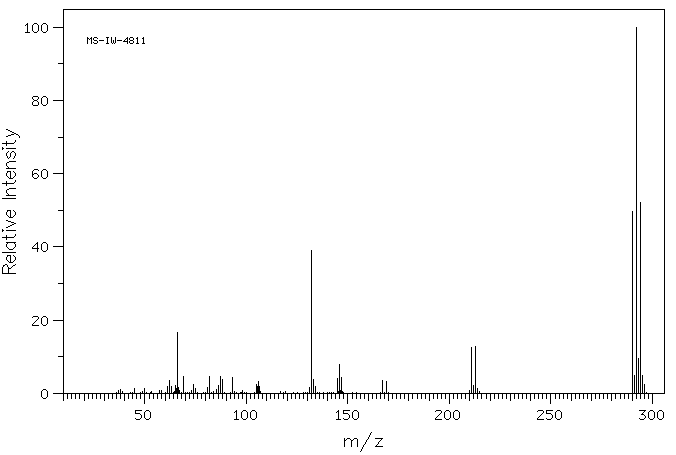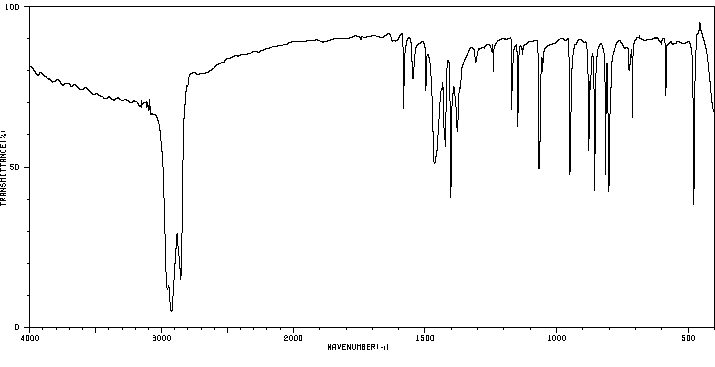2,5-dibromobenzothiophene | 7312-17-6
中文名称
——
中文别名
——
英文名称
2,5-dibromobenzothiophene
英文别名
2,5-dibromobenzo[b]thiophene;2,5-dibromo-1-benzothiophene
CAS
7312-17-6
化学式
C8H4Br2S
mdl
——
分子量
291.994
InChiKey
JCHZJOMEFKCNLK-UHFFFAOYSA-N
BEILSTEIN
——
EINECS
——
-
物化性质
-
计算性质
-
ADMET
-
安全信息
-
SDS
-
制备方法与用途
-
上下游信息
-
文献信息
-
表征谱图
-
同类化合物
-
相关功能分类
-
相关结构分类
计算性质
-
辛醇/水分配系数(LogP):4.7
-
重原子数:11
-
可旋转键数:0
-
环数:2.0
-
sp3杂化的碳原子比例:0.0
-
拓扑面积:28.2
-
氢给体数:0
-
氢受体数:1
反应信息
-
作为反应物:描述:2,5-dibromobenzothiophene 、 苯硼酸 在 caesium carbonate 、 palladium dichloride 作用下, 以 乙醇 为溶剂, 反应 8.0h, 以87%的产率得到5-bromo-2-phenylbenzo[b]thiophene参考文献:名称:Trace amount Cu (ppm)-catalyzed intramolecular cyclization of 2-(gem-dibromovinyl)phenols(thiophenols) to 2-bromobenzofurans(thiophenes)摘要:在痕量铜(0.0064 mol%,25 ppm)存在下,开发了一种 2-(gem-dibromovinyl)苯酚(噻吩酚)分子内环化生成 2-溴苯并呋喃(噻吩)的方法。在无氟和温和的反应条件下,该反应能以极高的产率提供所需的产物,其 TON(转化率)高达 1.5 × 104。DOI:10.1039/c3ob40531a
-
作为产物:描述:4-bromo-2-(2,2-dibromovinyl)benzenethiol 在 copper(l) iodide 、 caesium carbonate 作用下, 以 乙醇 为溶剂, 反应 8.0h, 以92%的产率得到2,5-dibromobenzothiophene参考文献:名称:Trace amount Cu (ppm)-catalyzed intramolecular cyclization of 2-(gem-dibromovinyl)phenols(thiophenols) to 2-bromobenzofurans(thiophenes)摘要:在痕量铜(0.0064 mol%,25 ppm)存在下,开发了一种 2-(gem-dibromovinyl)苯酚(噻吩酚)分子内环化生成 2-溴苯并呋喃(噻吩)的方法。在无氟和温和的反应条件下,该反应能以极高的产率提供所需的产物,其 TON(转化率)高达 1.5 × 104。DOI:10.1039/c3ob40531a
文献信息
-
A highly efficient TBAF-promoted intramolecular cyclization of gem-dibromoolefins for the synthesis of 2-bromobenzofurans(thiophenes)作者:Wei Chen、Yicheng Zhang、Lei Zhang、Min Wang、Lei WangDOI:10.1039/c1cc13967c日期:——A highly efficient tetra-(n-butyl)ammonium fluoride (TBAF)-promoted intramolecular cyclization of gem-dibromoolefins has been developed for the synthesis of 2-bromobenzofused heterocycles. The reaction provides a convenient approach to 2-bromobenzofurans(thiophenes) from the corresponding readily available gem-dibromovinyl substrates without a metal.
-
Intramolecular cross-coupling of gem-dibromoolefins: a mild approach to 2-bromo benzofused heterocycles作者:Stephen G. Newman、Valentina Aureggi、Christopher S. Bryan、Mark LautensDOI:10.1039/b912093a日期:——Highly useful halogenated benzofurans and benzothiophenes are prepared from readily available gem-dibromoolefins using a mild, ligand-free copper catalyzed cross-coupling procedure.
-
Bromide as the Directing Group for β-Arylation of Thiophenes作者:Hong-Hai Zhang、Cai-Xia Wang、Fei-Fei Sheng、Kai-Hui Liu、Jian-Guo Gu、Kang Shen、Zheng-Yi Sun、Kunlun HongDOI:10.1055/a-1838-8958日期:2022.9Direct β-arylation of thiophene derivatives with bromide as directing group is disclosed. The reaction is conducted with PdCl2/(p-tolyl)3P as catalyst, silver carbonate as additive, and aryl iodide as coupling partner, affording brominated biaryl compounds as product. Control experiments indicated that the presence of bromide group enhances the reactivity of the C–H bond, enabling β-arylation. Furthermore
表征谱图
-
氢谱1HNMR
-
质谱MS
-
碳谱13CNMR
-
红外IR
-
拉曼Raman
-
峰位数据
-
峰位匹配
-
表征信息
同类化合物
齐留通钠
齐留通相关物质A
齐留通亚砜
齐留通-d4
齐留通
雷洛昔芬杂质
邻联甲苯胺砜
试剂4,8-Bis(3,5-dioctyl-2-thienyl)-2,6-bis(4,4,5,5-tetramethyl-1,3,2-dioxaborolan-2-yl)benzo[1,2-b:4,5-b']dithiophene
试剂1,1'-[4,8-Bis[4-(2-ethylhexyl)-3,5-difluorophenyl]benzo[1,2-b:4,5-b']dithiophene-2,6-diyl]bis[1,1,1-trimethylstannane]
苯并噻吩-7-醇
苯并噻吩-4-硼酸频哪醇酯
苯并噻吩-3-羧酸甲酯
苯并噻吩-3-硼酸
苯并噻吩-2-羰酰氯
苯并噻吩-2-羧酸肼
苯并噻吩-2-羧酸
苯并噻吩-2-硼酸
苯并噻吩-2-氨基甲酸叔丁酯
苯并噻吩
苯并[c]噻吩
苯并[b]噻吩-7-胺
苯并[b]噻吩-7-羧酸乙酯
苯并[b]噻吩-7-甲醛
苯并[b]噻吩-7-甲腈
苯并[b]噻吩-6-醇
苯并[b]噻吩-6-胺
苯并[b]噻吩-6-羧酸乙酯
苯并[b]噻吩-6-羧酸
苯并[b]噻吩-6-甲腈
苯并[b]噻吩-5-甲腈,2-甲酰基-
苯并[b]噻吩-5-甲磺酰氯
苯并[b]噻吩-4-羧酸甲酯
苯并[b]噻吩-4-羧酸
苯并[b]噻吩-4-甲醛
苯并[b]噻吩-4-甲腈
苯并[b]噻吩-4-基甲醇
苯并[b]噻吩-3-胺盐酸盐
苯并[b]噻吩-3-胺
苯并[b]噻吩-3-羧酸-(2-二烯丙基氨基乙酯)
苯并[b]噻吩-3-硼酸频哪酯
苯并[b]噻吩-3-甲醛肟
苯并[b]噻吩-3-甲酰胺
苯并[b]噻吩-3-基乙酸酯
苯并[b]噻吩-3-乙酸
苯并[b]噻吩-3-乙酰氯
苯并[b]噻吩-3-乙腈
苯并[b]噻吩-2-胺盐酸盐
苯并[b]噻吩-2-羧酸6-氨基-3-氯-甲酯
苯并[b]噻吩-2-羧酸,5-氯-3-(1-甲基乙氧基)-
苯并[b]噻吩-2-羧酸,3-羟基-5-甲氧基-,甲基酯








